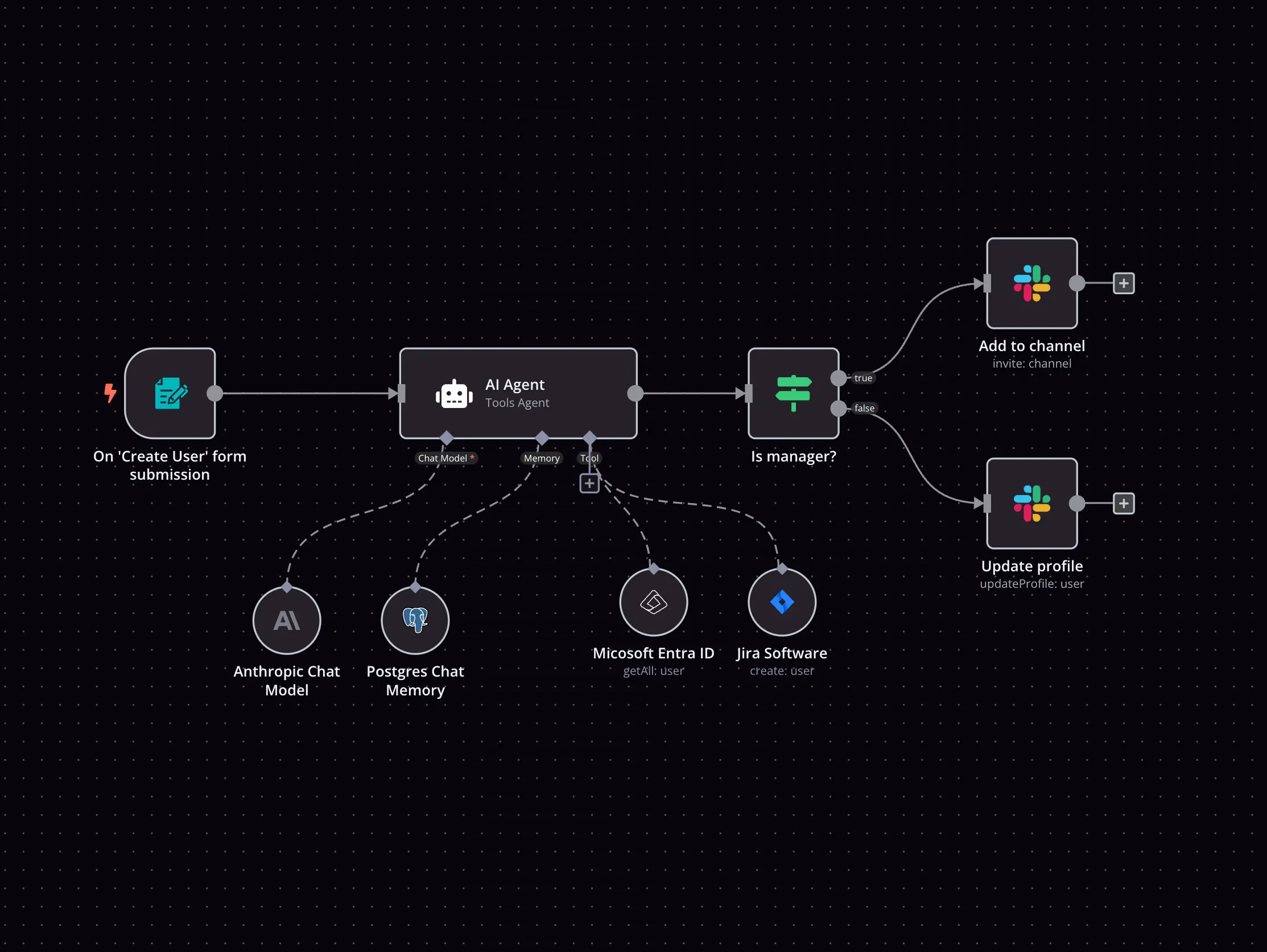Webhook and Google Gemini Chat Model integration
Save yourself the work of writing custom integrations for Webhook and Google Gemini Chat Model and use n8n instead. Build adaptable and scalable Development, Core Nodes, workflows that work with your technology stack. All within a building experience you will love.
How to connect Webhook and Google Gemini Chat Model
Create a new workflow and add the first step
In n8n, click the "Add workflow" button in the Workflows tab to create a new workflow. Add the starting point – a trigger on when your workflow should run: an app event, a schedule, a webhook call, another workflow, an AI chat, or a manual trigger. Sometimes, the HTTP Request node might already serve as your starting point.
Popular ways to use the Webhook and Google Gemini Chat Model integration
🤖 AI Powered RAG Chatbot for Your Docs + Google Drive + Gemini + Qdrant
Proxmox AI Agent with n8n and Generative AI Integration
Build a Voice AI Chatbot with ElevenLabs and InfraNodus Knowledge Experts
AI Voice Chat using Webhook, Memory Manager, OpenAI, Google Gemini & ElevenLabs
🛠️ AI Prompt Maker
Automated Instagram Reels Workflow
Build your own Webhook and Google Gemini Chat Model integration
Create custom Webhook and Google Gemini Chat Model workflows by choosing triggers and actions. Nodes come with global operations and settings, as well as app-specific parameters that can be configured. You can also use the HTTP Request node to query data from any app or service with a REST API.
Webhook and Google Gemini Chat Model integration details
Webhook
Webhooks are automatic notifications that apps send when something occurs. They are sent to a certain URL, which is effectively the app's phone number or address, and contain a message or payload. Polling is nearly never quicker than webhooks, and it takes less effort from you.
Related categories
Google Gemini Chat Model
Google Gemini Chat Model node docs + examples
Google Gemini Chat Model credential docs
See Google Gemini Chat Model integrations
Related categories
FAQ
Can Webhook connect with Google Gemini Chat Model?
Can I use Webhook’s API with n8n?
Can I use Google Gemini Chat Model’s API with n8n?
Is n8n secure for integrating Webhook and Google Gemini Chat Model?
How to get started with Webhook and Google Gemini Chat Model integration in n8n.io?
Need help setting up your Webhook and Google Gemini Chat Model integration?
Discover our latest community's recommendations and join the discussions about Webhook and Google Gemini Chat Model integration.

Retrieving body from a POST multipart/form-data request
Benjamin Hatton
Hi everyone, first of all, I’d like to say I’m really pleased to join the n8n community : I discovered n8n through SeaTable, and I really love it, thanks a lot for all this work and for maintaining a community version :+…
Open topic

Some webhooks not working
Albert Ashkhatoyan
Hey! I have Migrated my n8n instance to a new machine on AWS and added Postgres DB, Everything exported and imported and seems all workflows exist but some workflows with webhook trigger gives error connection timeout. I…
Open topic

Webhook timeout after wait node
Víctor González
Hello everyone, I made a n8n workflow trying to circumvent some limitations in a wordpress plugin I use called Funnelkit Automations. Funnelkit has a node based interface to build marketing automations, similar to n8n b…
Open topic

What happens if a webhook misses an event because the server was down?
Salomão
Let’s say I have a webhook listening for Stripe payment events and I’m updating my server exactly during the time of a purchase. What happens? And how to prevent missing events? Information on your n8n setup n8n vers…
Open topic

Postman to N8N - Binary file upload and write to local FS
sg tech
Describe the problem/error/question I am trying to build a simple API via N8N Webhook which will accept a Binary file and then write it to the local Filesystem. The postman is sending the file as form-data of type File. …
Open topic
Looking to integrate Webhook and Google Gemini Chat Model in your company?
The world's most popular workflow automation platform for technical teams including
Why use n8n to integrate Webhook with Google Gemini Chat Model
Build complex workflows, really fast


